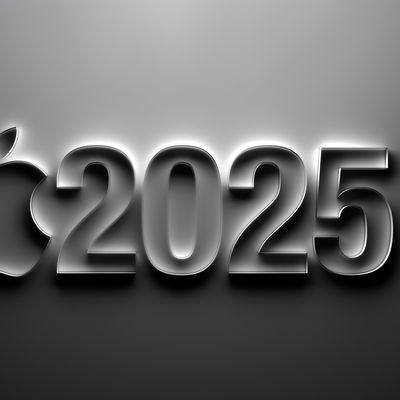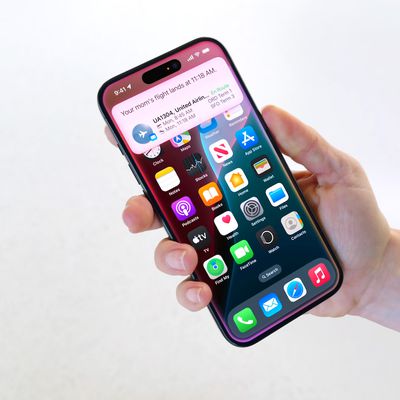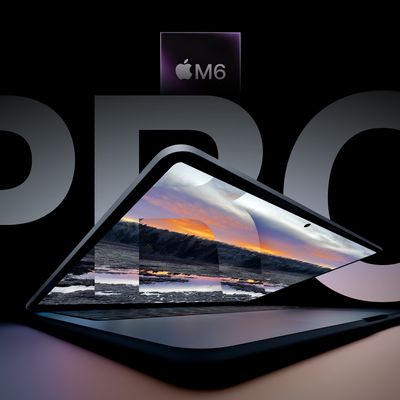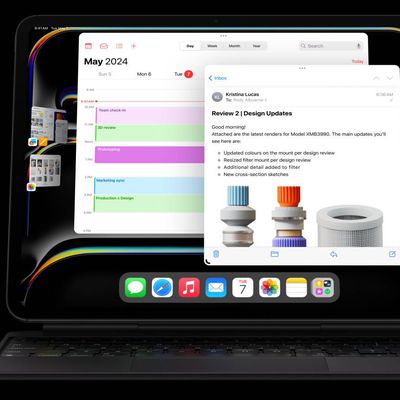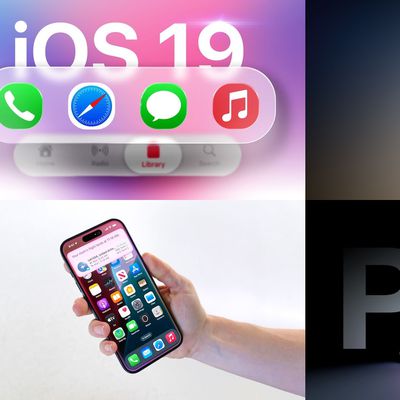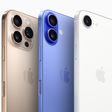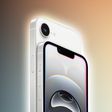There have been multiple signs suggesting that Apple's mixed reality Vision Pro headset is struggling to take off, both due to the super high price and the heavy design that limits the amount of time it can be worn for most people. What does the Vision Pro's floundering mean for Apple's work on future virtual and augmented reality projects?
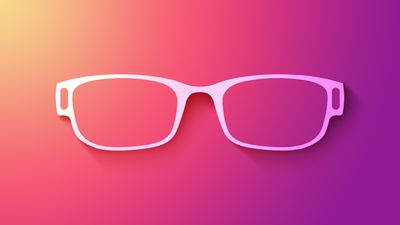
Vision Pro Interest
Interest in the Vision Pro was high in February when the device first launched because it was an all-new product category for Apple, but that didn't last. The Vision Pro is indisputably impressive, and it is mind blowing to watch a butterfly flit by so closely it feels like you can reach out and touch it, or to see the rough skin of an elephant as it walks right by you, but the magic quickly wears off for most.
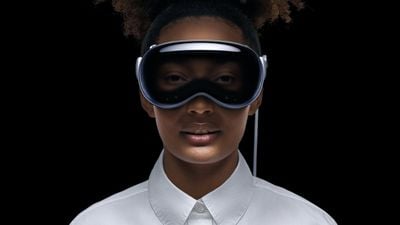
Early reviews found the Vision Pro hard to wear for a long enough period of time to incorporate it into a real workflow, and it was hard to find a use case that justified the $3,500 price tag. The Verge's Nilay Patel found the Vision Pro to be uncomfortably isolating, and The Wall Street Journal's Joanna Stern got nauseous every time she watched the limited amount of Apple Immersive Video content available. Reviewers agreed that watching TV and movies was one of the best use cases, but that makes for an expensive TV that can't be watched with anyone else.
Months later, sentiment hasn't changed much. There was a lot of demand at Apple Stores when the Vision Pro launched, and long lines of people wanted to give it a try. Once the demo was over, though, interest fell. As early as April, there were reports that enthusiasm about the Vision Pro had dropped significantly, and by July, there were reports of waning sales.
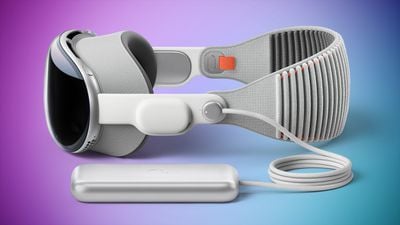
At MacRumors, a few of us bought a Vision Pro at launch, and those headsets are tucked away in their cases and essentially not pulled out much at all anymore, except to sometimes watch Apple's latest Immersive Video or to update to new visionOS software. MacRumors videographer Dan Barbera uses his Vision Pro once a week or so for watching content, but only for about two hours because it's painful to continue use after that point. MacRumors editor in chief Eric Slivka and I haven't found a compelling use case, and there's no content appealing enough for even weekly use.
I still can't wear the Vision Pro for more than two hours or so because it's too uncomfortable, and I'm prone to motion sickness so it sometimes makes me feel queasy if there's too much movement. The biggest reason I don't use the Vision Pro, though, is that I don't want to shut out what's around me. Sure, it's great for watching movies, TV shows, or YouTube videos on a screen that looks like it's 100 feet tall, but to do that, I have to isolate myself. I can't watch with other people, and I feel genuinely guilty when my cat comes over for attention and I'm distracted by my headset.
Watching movies on the Vision Pro is not a better experience than using the 65-inch TV in front of my couch. I am a gamer, but there aren't many interesting games, and a lot of the content that's available feels like I'm playing a mobile game in a less intuitive way. Using it as a display for my Mac is the best use case I've found, but it's limited to a single display and it's not enough of an improvement over my two display setup to justify being uncomfortable while I work.
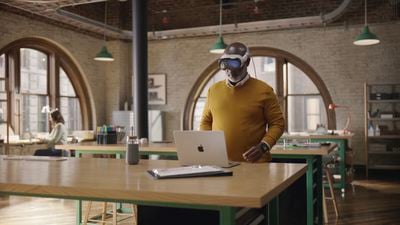
Beyond our own experiences with the Vision Pro, MacRumors site traffic indicates a lack of interest in the headset. When we publish a story about the Vision Pro, people don't read it. I wrote a Vision Pro story about the first short film on the headset just yesterday, for example, and it was our lowest traffic article for the day. It probably wasn't worth my time to even do, and that's not an isolated incident.
There are enterprise use cases for Vision Pro, and some people out there who do love the headset, so it does have some promise, and Apple has been marketing it to businesses. Some examples, from Apple and others:
- Porsche - Porsche engineers use the Vision Pro to visualize car data in real time.
- KLM - KLM Airlines is using the Vision Pro for training technicians on new engine models.
- Law enforcement - Police departments in California are testing Vision Pro for surveillance work.
- Medicine - A medical team in the UK used the Vision Pro for two spinal surgeries. Doctors in India also reportedly use it for laparoscopic surgeries, and an orthopedic surgeon in Brazil used it during a shoulder surgery. UCSD has been testing the use of Vision Pro apps for minimally invasive surgery.
- Science - MIT students wrote an app to control a robot using the Vision Pro's gesture support.
Tim Cook said in May that "half" of Fortune 100 companies bought a Vision Pro, but whether those Vision Pro headsets are actually in use and what for is unknown.
Confusion Over What's Next
With Vision Pro sales coming in under what Apple expected, we've seen some confusing rumors about what Apple's next move will be. There were initially rumors that Apple was working on two new versions of the Vision Pro, one that's cheaper and one that's a direct successor to the current model.
In April, Bloomberg's Mark Gurman said Apple would not launch a new version of the Vision Pro prior to the end of 2026, with Apple struggling to find ways to bring down the cost of the headset.
In June, The Information said Apple had suspended work on a second-generation Vision Pro to focus on a cheaper model. Later that same month, Gurman said that Apple might make the next Vision Pro reliant on a tethered iPhone or Mac, which could drop costs, and he said a cheaper headset could come out as early as the end of 2025.
In late September, Apple analyst Ming-Chi Kuo said Apple would begin production on a new version of the Vision Pro in the second half of 2025, presumably for a late 2025 launch. He claims the most substantial upgrade will be a new M5 chip for notably better computing power, with the specifications, design, and price to stay largely the same. This is in contrast to a February rumor from Kuo that said Apple wouldn't release a new model until 2027.
None of these rumors are really on the same page, so Apple's next step in AR/VR development is unclear. Kuo is saying there will be a new Vision Pro with a faster chip at the end of 2025, while Gurman and The Information think we'll get a cheaper version of the headset. Even Apple might not yet have a clear decision on what's next, so we'll have to wait and see how the company's AR/VR strategy evolves.
AR Smart Glasses
Since before Apple came out with the Vision Pro, there have been rumors about work on lightweight augmented reality smart glasses. AR glasses are Apple's actual longterm goal, with the Vision Pro serving as a stepping stone. Apple CEO Tim Cook has talked about Apple's interest in augmented reality extensively, calling it "big and profound," and something that people will eventually look back on and wonder how they lived without it.
Apple wanted to release AR smart glasses as early as 2023 before delaying the project to 2025, but unfortunately, development was postponed "indefinitely" in January 2023. According to Gurman, Apple stopped work because of technical difficulties, and there are some Apple employees that don't think Apple will ever ship AR glasses.
Later in 2023, Gurman clarified that smart glasses were "at least" four years away from launching. Apple realized while developing the Vision Pro that building AR glasses with sufficient power was not feasible. To work, the glasses would need to provide the full performance of an iPhone with a tenth of its power consumption to keep them from getting too warm. Apple's work on smart glasses receives "limited resources," with most development going toward the Vision Pro to lay the foundation for a future where the AR technology will work.
Serious development on standalone AR glasses is postponed at the current time, so it's not quite clear when we're going to reach a point where hardware miniaturization and chip efficiency improvements will allow for AR glasses as Apple envisions them.
Way back in 2017, Apple CEO Tim Cook said that the technology doesn't exist to do AR smart glasses "in a quality way," and that doesn't appear to have changed since then. It will likely be close to the end of the decade before we start hearing serious reports about Apple's work on augmented reality glasses.
If Apple can continue to fund new versions of the Vision Pro and make improvements to that product line like it did with the Apple Watch, the future looks promising for a lightweight set of glasses that combine the power of the iPhone with the wonder of the Vision Pro.
Meta's Smart Glasses
Last month, Facebook parent company Meta showed off its Orion augmented reality smart glasses. The glasses have a super thick frame, but they look a lot more like regular glasses than any mixed reality headset on the market.
 Meta Orion
Meta OrionMeta's Orion glasses have been in development for more than five years, and Meta isn't ready to release them. They're still in a prototyping stage, but Meta is testing them with employees and select external audiences to "learn, iterate, and build" toward a consumer AR glasses product line. Meta's glasses aren't standalone, requiring a wristband for control and a compute puck that has to be in the room.
It costs Meta around $10,000 to make one pair of the Orion glasses, so that gives us some context on the hurdles that Apple needs to overcome to get AR glasses to market. Meta can't sell the glasses at that price point, and it's likely going to be several years before they come down to a price low enough to entice consumers.
Something In-Between
Meta also has Ray-Ban AI glasses that are affordable, but don't have any augmented reality capabilities. Apple has explored a similar product, and there's a chance that we could get something like the Ray-Ban glasses in the future.
 Meta's Ray-Ban Glasses
Meta's Ray-Ban GlassesApple could make simple glasses with a camera, Siri integration, and built-in speakers for listening to music, because speaker-equipped sunglasses have also caught on in recent years. Health capabilities could be included too. Right now Apple is still considering such a product, so it's not clear if it's something that will make it to an actual development stage.
The Far Future
If Apple does master AR smart glasses, technology could eventually come to a point where something even smaller is possible. Ming-Chi Kuo claimed in 2021 that Apple could release augmented reality contact lenses in the 2030s, but that prediction is sounding unrealistic at a point when technology can't be miniaturized enough even for quality AR glasses.
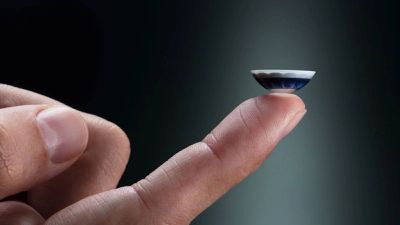
Your Thoughts
Do you have a Vision Pro and still use it? Would you wear AR smart glasses, or even glasses with just a camera and a speaker? Let us know in the comments.



